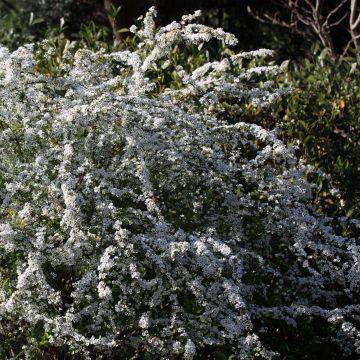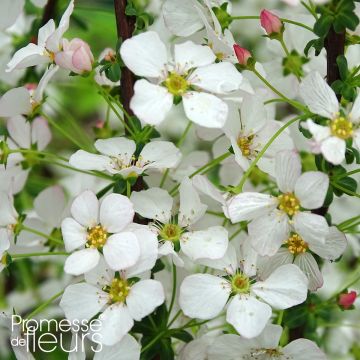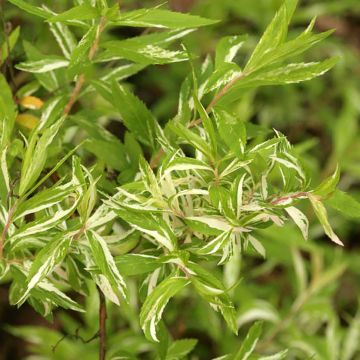Spring Spiraea
Would this plant suit my garden? Set up your Plantfit profile →
Available in 5 sizes
Available in 3 sizes
Available in 3 sizes
Available in 2 sizes
Available in 5 sizes
Available in 2 sizes
Available in 3 sizes
Available in 4 sizes
Available in 1 sizes
Available in 1 sizes
Available in 2 sizes
Available in 2 sizes
Available in 1 sizes
Available in 1 sizes
Available in 1 sizes
Available in 2 sizes
Available in 1 sizes
Available in 1 sizes
Available in 1 sizes
Available in 1 sizes
Available in 1 sizes
Available in 1 sizes
Contrary to the Japanese spireas that bloom in summer, some spireas (or spiraea) bloom in spring. These are deciduous, graceful bushes with generally white flowering, with an arching habit, and their small flowers bloom along the branches from the previous year between March and June depending on the species and varieties. They are excellent garden plants, undemanding and robust, the most well-known ones including Arguta spirea, Vanhouttei spirea, or S. thunbergii. The first to bloom is the prunifolia spirea, capable of flowering as early as March in mild climates. Not exceeding 2.50 m (8ft) in height, spring spireas are abundantly planted in gardens and in landscaping as informal hedges, shrub beds, or individual subjects. The smaller ones, derived from the birchleaf spirea (varieties 'Tor' or 'Tor Gold' for example), do not exceed 80 cm (32in) in height and can also be grown in pots.
Haven't found what you were looking for?



































































